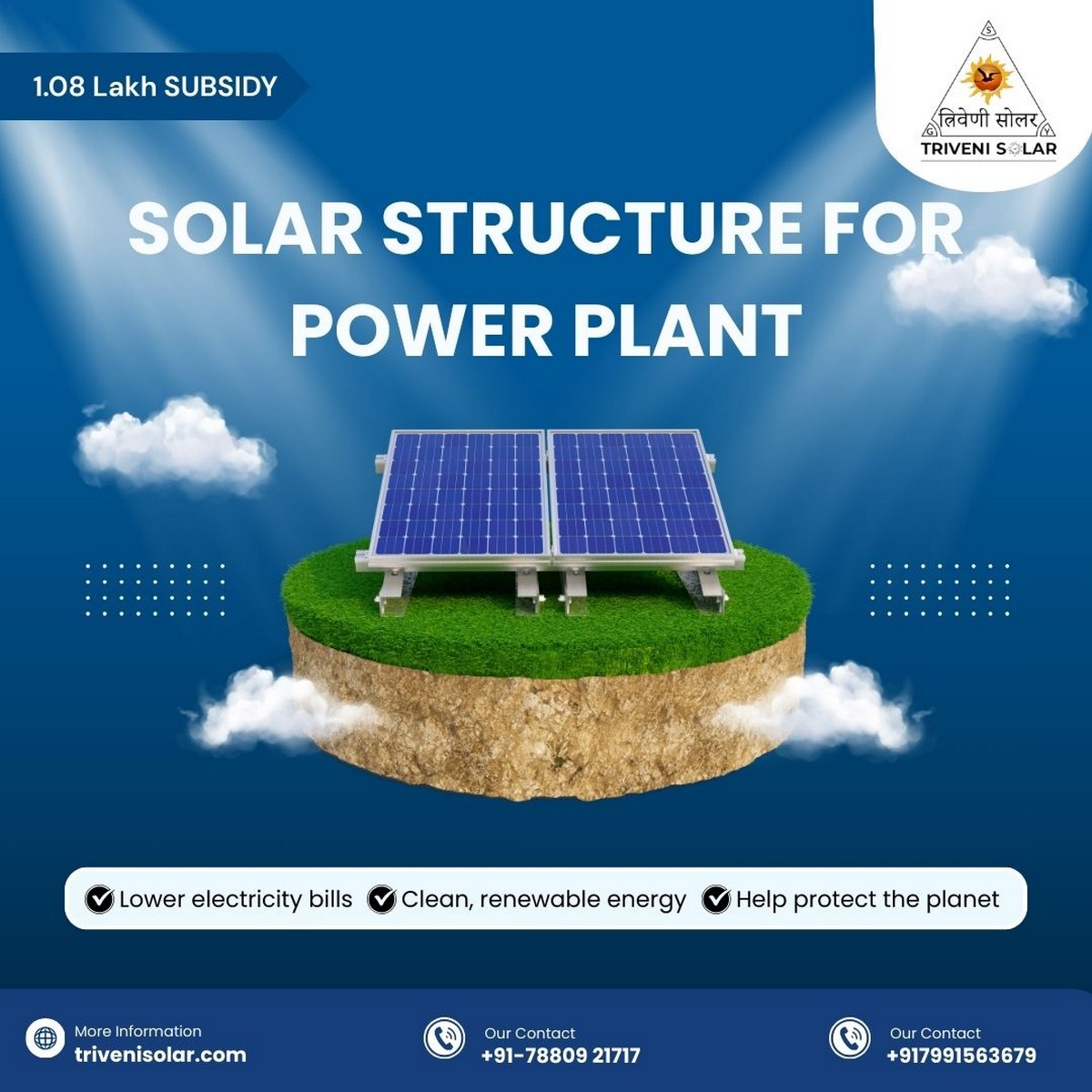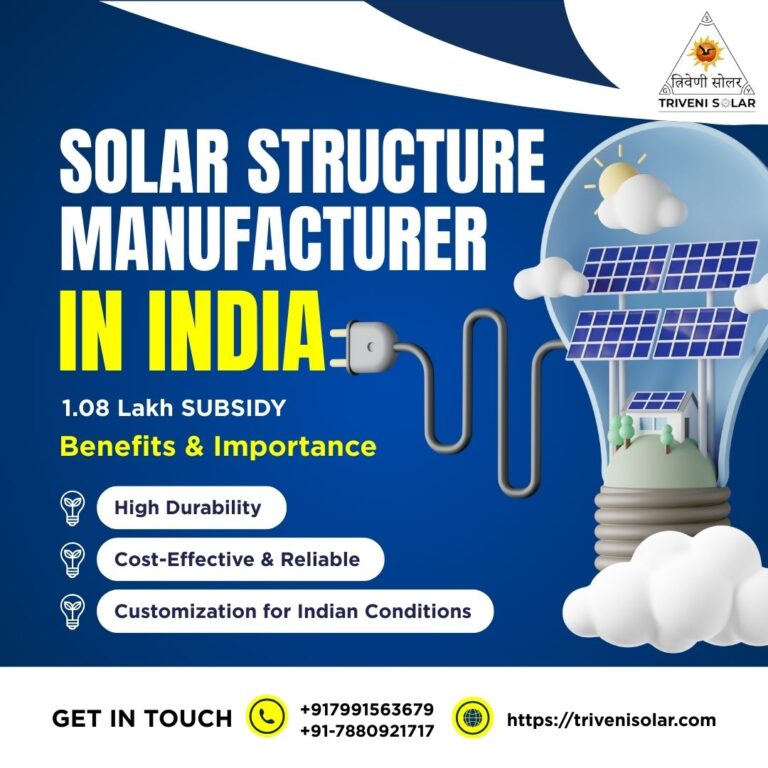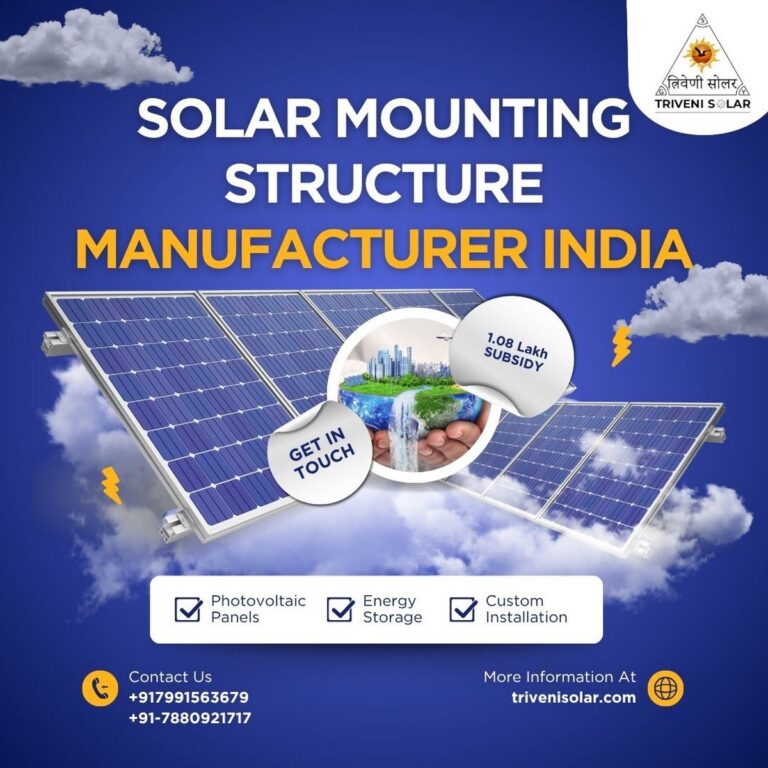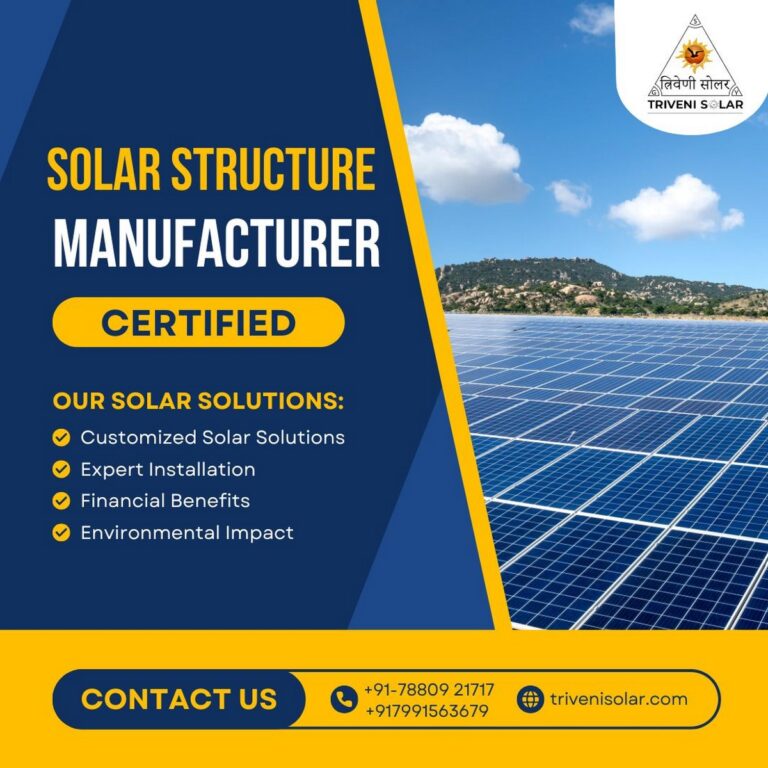Solar structure for power plants are engineered frameworks that support photovoltaic panels, ensuring optimal angles and stability. They maximize energy output and increase system longevity.
Table of Contents
- Understanding Solar Mounting Structures
- Types of Solar Mounting Structures
- Design Considerations
- Installation & Maintenance
- Case Studies
- Conclusion
- FAQ
Understanding Solar Structure
Solar mounting structures are robust frameworks that support solar panels in power plants. They ensure optimal sunlight exposure, structural stability, and longevity of the photovoltaic system. By positioning panels at precise angles, they improve energy efficiency and durability. Triveni Solar specializes in high-quality solar structures that meet international engineering standards, ensuring every project is successful and reliable.
Types of Solar Structure
Rooftop Mounting Systems
Rooftop solar structures are installed on commercial or industrial rooftops. They are cost-effective and space-efficient, ideal for urban settings. These systems are often fixed-angle or adjustable, allowing minor orientation tweaks.
Ground-Mounted Structures
Ground-mounted solar structures are used in large-scale solar farms. These systems offer flexibility in panel positioning and can accommodate tracking mechanisms to follow the sun, increasing energy output by up to 25%.
Pole-Mounted Systems
Pole-mounted solar structures elevate panels on single or multiple poles, providing better airflow and reducing ground shading. They are excellent for uneven terrain and remote installations.
Carport and Canopy Systems
These multifunctional structures protect vehicles while generating electricity. They are widely used in commercial spaces, parking lots, and campuses, delivering both energy efficiency and utility.
Comparison of Solar Structure Types
| Structure Type | Cost | Efficiency | Best For |
|---|---|---|---|
| Rooftop | Low | Moderate | Urban/Commercial |
| Ground-Mounted | Moderate | High | Large Solar Farms |
| Pole-Mounted | Moderate | High | Uneven Terrain |
| Carport/Canopy | High | High | Parking Lots, Campuses |
Design Considerations
When designing solar structures for power plants, several factors must be considered:
- Location & Terrain: Ground stability, wind conditions, and sunlight intensity.
- Panel Orientation: Optimal tilt angle for maximum efficiency.
- Material Quality: Corrosion-resistant steel or aluminum for longevity.
- Structural Load: Accounting for snow, wind, and seismic activity.
- Scalability: Ability to expand as the plant grows.
Solar Structure Installation & Maintenance
Proper installation is critical for long-term performance. At Triveni Solar, our expert teams follow rigorous standards:
- Precision alignment of panels and structure.
- High-strength bolting and welding.
- Anti-corrosion coating for durability.
- Regular inspection schedules to prevent structural fatigue.
Maintenance Tips:
- Clean panels periodically to remove dust and debris.
- Inspect bolts and joints quarterly.
- Check for any signs of corrosion or deformation.
- Lubricate moving parts in tracking systems annually.
Performance Metrics of Solar Structures
| Structure Type | Expected Lifespan | Energy Efficiency Gain | Maintenance Frequency |
|---|---|---|---|
| Rooftop | 20-25 Years | 10-15% | Quarterly |
| Ground-Mounted | 25-30 Years | 20-25% | Bi-Annually |
| Pole-Mounted | 20-25 Years | 15-20% | Quarterly |
| Carport/Canopy | 25-30 Years | 20% | Bi-Annually |
Case Studies
Project 1: 50 MW Solar Farm in Rajasthan
Triveni Solar installed ground-mounted structures with single-axis trackers. The project achieved 22% higher energy output compared to fixed systems.
Project 2: Industrial Rooftop in Gujarat
Rooftop solar structures were deployed for a manufacturing unit. The installation reduced energy costs by 30% and utilized available rooftop space efficiently.
Conclusion
Choosing the right solar structure for power plant is critical for energy efficiency, cost-effectiveness, and long-term durability. Triveni Solar offers customized solutions tailored to every project need, ensuring optimal performance and reliability.
Call to Action:
- Contact Triveni Solar today for a customized solar structure solution!
- Request a free consultation and optimize your solar power plant.
FAQ
What are solar structure for power plants?
Solar structures are frameworks that support photovoltaic panels, ensuring optimal orientation to maximize sunlight exposure and energy production.
Why are solar structure important?
They provide stability, durability, and proper panel positioning, essential for maximizing energy output and prolonging the lifespan of the solar system.
How do I choose the right solar structure?
Consider location, panel type, terrain, and budget. Consulting experts ensures the selection of the most suitable structure for your power plant.
How long do solar structures last?
Depending on the material and maintenance, solar structures typically last 20-30 years, providing long-term value for your investment.
Can solar structures include tracking systems?
Yes, many ground-mounted and pole-mounted structures can integrate single or dual-axis trackers to increase energy output significantly.




